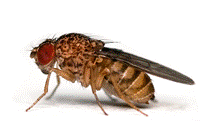Papers in the Biological Sciences

Lawrence G. Harshman Publications
ORCID IDs
Document Type
Article
Date of this Version
2010
Citation
Journal of Insect Physiology 56 (2010), pp. 1465–1470; doi:10.1016/j.jinsphys.2010.06.003
Abstract
Metabolites of the 6,7,10,11 bisepoxide juvenile hormone III (JHB3), and other potential juvenoids, were tested for juvenile hormone activity using early instar or early stage pupae of Drosophila mela-nogaster. Importantly, methyl farnesoates were tested as they might have JH-like activity on Dipteran juveniles. Larvae were exposed to compounds in medium, or the compounds were applied to white puparia. In the assays employed in the present study, there was no indication for JH activity associ-ated with the metabolites of JHB3. The activity of methyl farnesoate (MF) was higher than that of JH III and far greater than bisepoxide JH III. As opposed to the two endogenous juvenile hormones, methyl farnesoate has weak activity in the white puparial bioassay. When fluorinated forms of me-thyl farnesoate, which is unlikely to be converted to JH, were applied to Drosophila medium to which fly eggs were introduced, there was a high degree of larval mortality, but no evidence of subsequent mortality at the pupal stage. One possible explanation for the results is that methyl farnesoate is active as a hormone in larval stages, but has little activity at the pupal stage where only juvenile hormone has a major effect.


Comments
© 2010 Elsevier Ltd. Used by permission.